National Hispanic Heritage Month is celebrated from September 15 to October 15. It recognizes and celebrates the histories, cultures, and contributions of American citizens whose ancestors came from Spain, Mexico, the Caribbean, and Central and South America. And, for all my fellow Canadians, Canada also sets aside October as Latin American Heritage Month. So we’re celebrating this month by spotlighting a beautiful third-party project called Koboa, a new setting rooted in the mythology, history, and culture of South America—as told by its team of expert Latine creators.
If you missed the Kickstarter earlier this year, I’m so excited to introduce you to this incredible setting, so let’s jump right in!
- What Is Koboa, and Why Is This Setting Important?
- Koboa's Art: Bringing the World to Life
- A Different Approach: Forms Instead of Races
- Meet Some of Koboa’s Creators
What Is Koboa, and Why Is This Setting Important?

Successfully kickstarted in May, Koboa is a 150+ page setting book based on the stories and cultures of South American Indigenous, Afrolatine, and Mestize peoples. It’s filled to the brim with extensive worldbuilding, a plethora of player options, a large lineup of new creatures, and drop-dead gorgeous art.
“A land in healing calls for adventurers. A century ago, the Larensian Invaders were defeated and driven off the land of Koboa. Centuries of occupation, however, have left their mark on the land and its people. The careless greed of the Larensians left the continent a dangerous and wounded place. Monsters, fiends, and all forms of otherworldly creatures roam the wilderness. The new nations of the continent seek adventurers to clear the monsters, delve into abandoned temples, reclaim the lost treasures of their people, and build a new future for all Koboans.”
— Koboa’s Kickstarter page
Why Is Koboa an Important Project?
Like so many projects, Koboa began at the D&D table of a home game. Adrián Mejía, a Latino Mestizo AuDHD designer, was drawing on stories and culture of Latin America as he was worldbuilding for his own campaign. “[I] realized that our stories are very underrepresented in fiction, both in terms of fantastical creatures we tell stories about and in terms of seeing actual Latine-coded stories in the heroes and characters of fantasy,” Adrián told me. As his game evolved, he also realized the campaign had a collection of unique concepts he wanted to share with others. And so Koboa was born.
“It's really important to me because I wish I'd had something like this when I started playing around in fantasy worlds. It took me a lot of years to simply have the idea that I didn't have to play a ‘standard’ fantasy hero who looks or lives nothing like me for my character and that I could, in fact, see myself and the people I know represented on the pages and stories we play, in ways that are not stereotyped or disrespectful,” Adrián said.
A Post-Colonial World
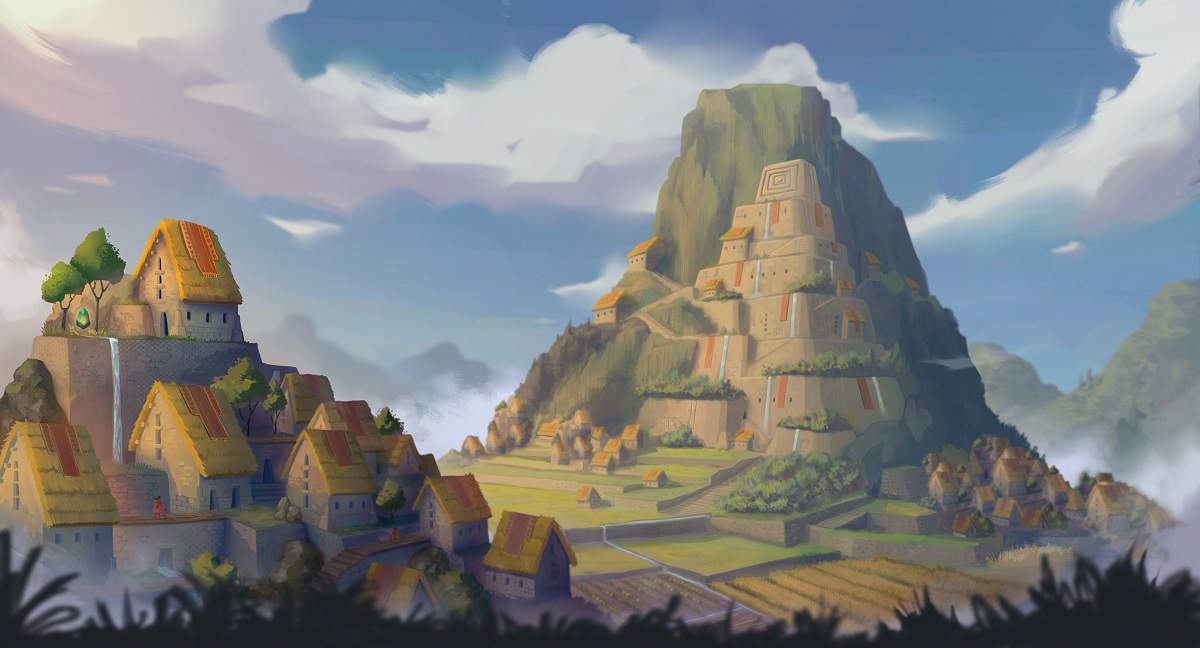
In order to accurately represent South America as it is today, the team needed to deal with the issue of colonization. They ultimately decided to make Koboa a post-colonial setting. The book's worldbuilding tells the story of invaders coming from across the sea, conquering the nations of Koboa, and installing a brutal occupation. A resistance quickly grew, a coalition was created, and after a series of Liberation Wars, the invaders were driven back. In the process, the land had to be ceded, borders shifted, and Koboa’s Five Territories were created—each of which draws from the writing team’s real-world experiences and, to some extent, from different inspirations.
“The story focuses heavily on the aftermath as the territories seek to find who they are in their freedom from the colonizers and reclaim the past that was stolen from them while creating a new future for themselves,” Adrián explained. “We wanted to explore what our own real-world South America could look like as we continue to deal with the colonialism that still pervades our society.” Koboa’s worldbuilding is full of cultures interacting with each other and clashing, and cycles of time create ruins upon ruins for characters to explore. The setting heavily leans into themes of reclaiming and recovery—as opposed to plundering and looting—and restoring natural balance.
Koboa's Art: Bringing the World to Life
Artwork has a way of making abstract ideas feel real. Bringing the tone of the setting to life through the book’s art has been a big area of focus. Adrián and the art director, Kaithzer, spent a lot of time looking for South American artists—including looking outside of the TTRPG industry in order to ensure the artists were representative. “By branching out this way, we've been able to get an incredible range of different and unique styles that we're very excited to showcase in our work,” Adrián said.
As I read Koboa’s preview document, which hints at the richness of what is to come, I was spellbound by this world and the way it is depicted by the artists. Kaithzer feels the art was a crucial part of worldbuilding, saying, “Having a clear and close cultural reference, along with cultural consultants for each of the nations inhabiting Koboa, allowed us to contrast them with the myths and legends they were inspired by, providing us with a solid foundation on where to focus.”
A Different Approach: Forms Instead of Races
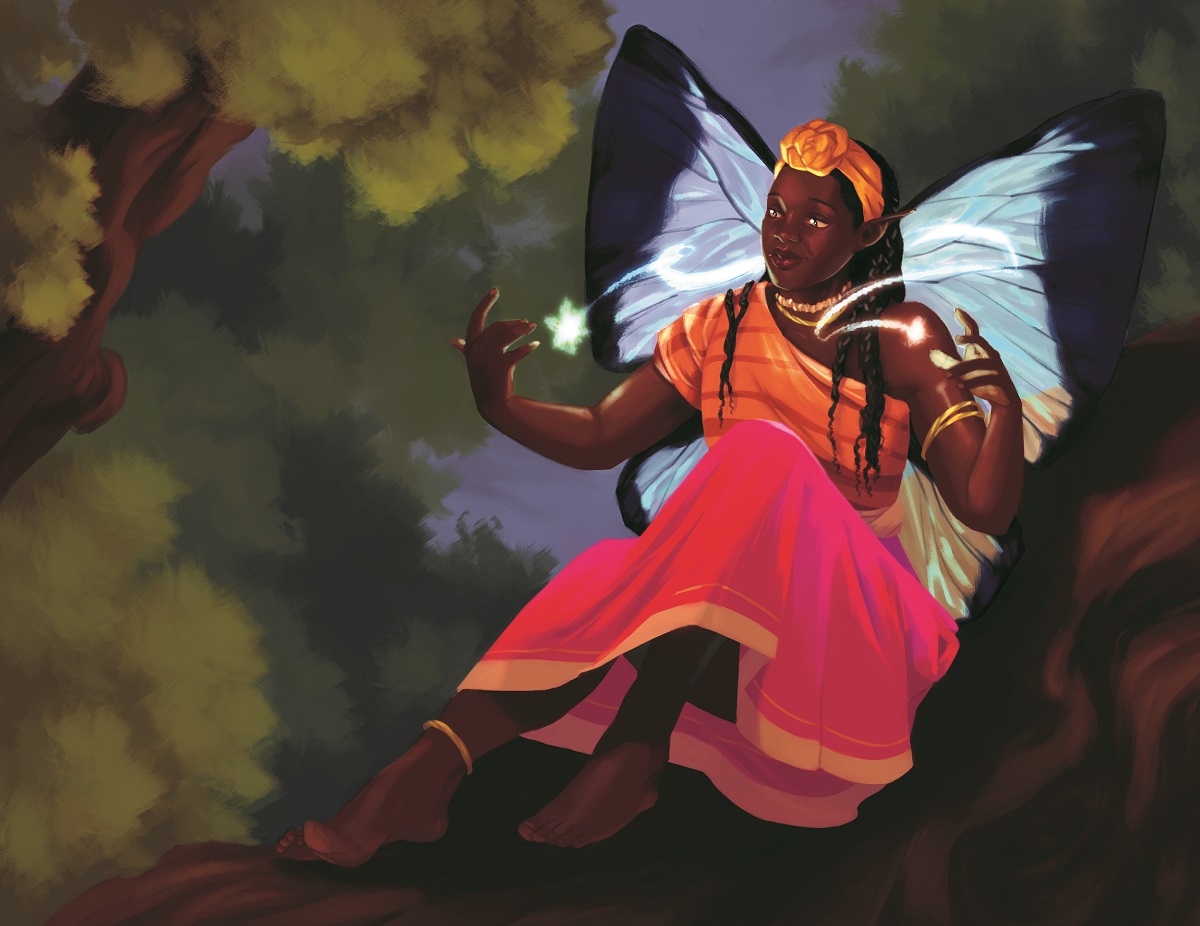
Koboa’s mythology tells of how ancient people used to have the same form until the Jutgot Nation created the Map of the Giant. Once they had that, they could change their physical form into a new form specified by the map. Soon other nations began creating their own maps, reflecting their culture’s shared values. In the recent age, the people of Koboa developed rituals allowing them to transfer their form to someone they care deeply about.
This is how Koboa’s designers creatively reimagine the classic approach to race. Forms provide a wide range of options for worldbuilding, storytelling, and portraying a truly diverse range of characters. One of my favorite aspects of Koboa is its people can change their physical form in meaningful moments to reflect the ways they discover themselves and shift their identities. There’s so much storytelling potential in the design of forms.
Race, Culture, and Forms
In most fantasy, a creature’s race defines its culture, which can sometimes lead to some problematic representation. For example, creating a fantastical race with strong bodies can lend itself toward a worldbuilding where every member of this race is a warrior. “These sorts of tropes reflect harmful real-world racism that marginalized people experience, reflecting how we frequently are put into boxes and assumptions are made about who we are and what we can do,” Adrián said. So Koboa flips race and culture around; now, culture defines form, which makes for a more flexible and dynamic worldbuilding.
“Because the people of Koboa have the power to define and create new forms,” Adrián explains, “cultures create forms that suit their geography, or beliefs, or needs. People who choose to live underground create a form that works well underground. People that live in the rainforest create a form that works well in the rainforest.”
Forms also give players the mechanics to easily create mixed-race and Mestize characters. “We wanted a mixed form to not only be common in Koboa but normalized, as it in many ways reflects the experience of cultures and people mixing in South America, where many of us do not feel we are Indigenous or African or European but instead something different,” Adrián said.
How Do Forms Work, and What Do They Mean for Players?
Forms mean players have a plethora of options to express their characters—and themselves. Folks with all kinds of identities will have many mechanical options to see themselves represented in the game.
You can preview a small sampling of the forms to come on Koboa’s website, but here are the very basics: You can take a form exactly as it is or mix and match manifestations from different forms to really customize your character concept. Play as a Ghintak with hair of flame that blazes magical fire when you’re threatened and who has a natural affinity for languages. Or as a Guveng, a swarm of flying insects who can come together to take the shape and consistency of a humanoid and who has one special insect ally that’s adept in combat. Or take the Ghintak’s flaming hot hair and combine it with the Guveng’s insect ally!
Meet Some of Koboa’s Creators
The team went to great lengths to create a setting representative of South American excellence. The team has highly talented Indigenous, Afrolatine, and Mestize creators. Here are just a few of the folks bringing this beautiful world to life.
Lucas Conti (he/him)
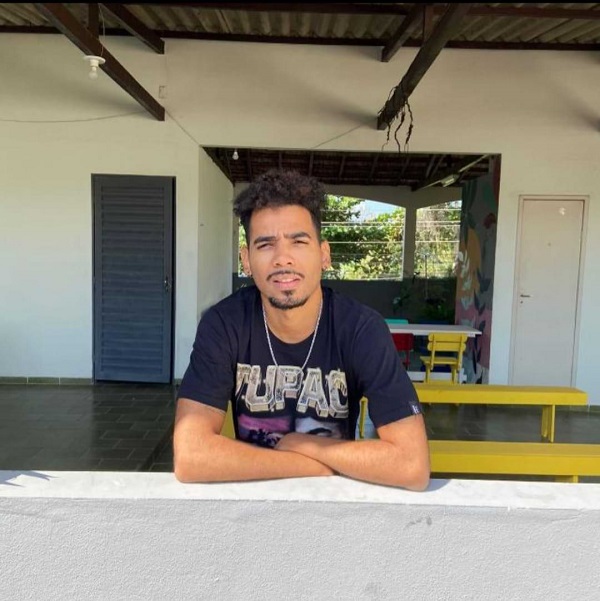
Lucas Conti is a Brazillian author and social science student whose work is heavily influenced by Rio de Janeiro's urban life. For Koboa, Lucas is writing the nation of Atsatray, “an Afrolatine nation that got most of its influences from the African-coded continent of Sial, in a diaspora kind of way,” Lucas said.
“Koboa is important to me because we can escape the 'Latin' image that the U.S. has built. As Koboa is mainly South American-inspired, we can show the world part of our culture through the lens of the fantastical setting we're building. The ancestry and comradery we experience working with other South American authors and artists is amazing too.”
Aside from Koboa, Lucas is excited about successfully funding Full Metal Cria, a Pokémon- and Beyblade-inspired game where kids and their robot partners battle through hardships using the power of friendship. You can stay up to date on Full Metal Cria on its Instagram or check out his first game, Mojubá, an Afro-Brazillian afrofuturistic RPG system. You can also connect with Lucas on his Twitter.
Daniel Delgado (he/him)
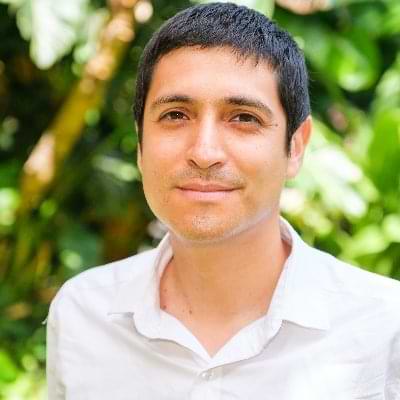
Daniel Delgado is a Quechua, Jewish, and Peruvian-American writer, game designer, sensitivity consultant, and rabbinic student.
Daniel built the nation of Novpo, which is based on South America's Andes Mountains and western deserts. Daniel has also designed two subclasses inspired by his Quechua culture, including Ranger of the Sacred Below—a conclave of underground rangers who protect their homes from encroachments of miners and exploiters seeking to take the land's wealth for their own. “Like many Indigenous writers,” Daniel said, “I am drawn to themes of surviving dark forces and how we emerge changed from that experience.”
Daniel is also one of the project’s sensitivity consultants—a role he started early on in the project. “I would love for people of all backgrounds to experience Koboa as a vibrant setting rich with diverse cultures and ecologies—just like South America! Stories that might be hard to tell in other settings will be right at home here. I particularly hope that Black and Indigenous Latines can fully bring themselves and their own peoples into those stories.”
You can check out "A Monster in Miami," a fantasy noir story Daniel wrote about a Quechua bruja. You can also connect with him on Twitter, Bluesky, or Mastodon.
Anne Ka'aru (she/her)
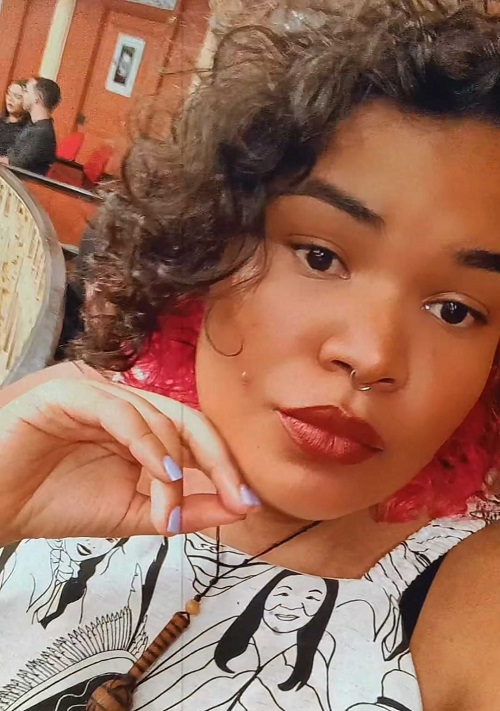
Anne Ka'aru is the result of miscegenation between Black and Indigenous people, born and raised in the Pernambuco countryside. She has a degree in Social Sciences and learned her love of storytelling from her maternal grandparents. A Latin-American, she’s a proud Brazilian and consciously expressed both her ethnicity and the Pernambuco region in her work. “I always try to create stories and characters that other people who come from the same place as me, who are ethnically similar to me, could identify with, recognize themselves,” Anne said.
One thing Anne wrote for Koboa is a narrative magic directly related to death: A Koboan Native burial ritual strengthens the magic of an island as bodies are buried there, but access to the island is lost after the colonizers begin their colonization project. She also wrote a short story about the coming of age of a character destined to become the Nakren, the leader of these people. “Of everything I’ve written so far, my favorite story and also my favorite character is Nakren,” Anne hinted. (Adrián also told me, “I cannot wait till people can read it.”)
When Anne begins to write something, she tries to connect to herself as a child. “I think that when we are children, we imagine and fantasize more freely,” Anne said. “We are not afraid to invent stories, to visualize the world in our own way in a completely different and incredible way. I always try to keep this with me.”
Anne is also a screenwriter. Her recent work explores various social and policy issues faced by her community in Brazil. You can connect with Anne and stay up to date on her work on her Instagram.
Alice Vitral (she/her, ela/-a)
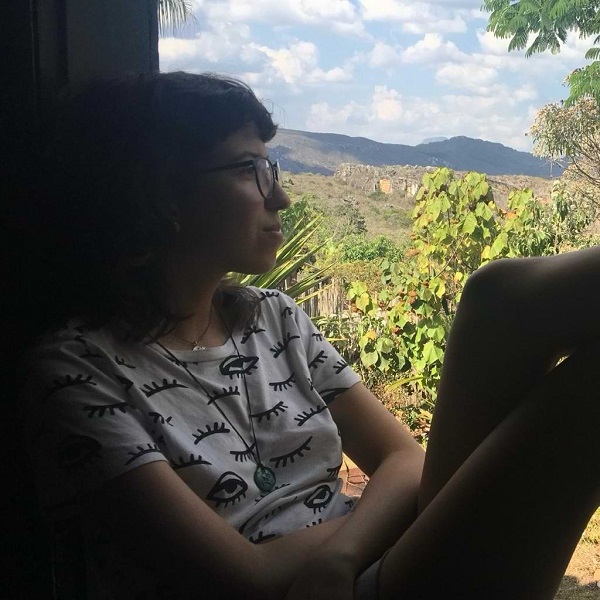
Alice Vitral is a queer Brazilian TTRPG creator. Her personal projects have been narrative indie games played without game masters, but she’s enjoyed the opportunity to write for D&D after playing it “nonstop” for the past six years.
“In my personal projects,” Alice said, “I value collaborative worldbuilding where the collaboration is happening between me, as the writer, and the players at the table. But working on a big project like Koboa, even one where the goal is to produce an extensive setting, is also a work of collaborative worldbuilding. It has been wonderful to see how we all bring our experiences to the table and how they communicate with each other.”
Alice wrote the Martyr Domain, a new cleric subclass for characters who serve once-mortals who ascended to godhood via martyrdom. She also developed Nueva Vardia—a nation inspired by the 19th-century Empire of Brazil. Alice is excited to have a setting pulled from her own history and cultural touchstones and hopes to bring freshness to the fantasy genre that’s been overly full of Eurocentric inspirations. “I had fun putting in Easter eggs and references to historical events I first learned about in middle school but that the rest of the world might be encountering for the first time,” she said.
Alice’s work focuses on community, a sense of wonder, and saudade—the Portuguese language’s claim to fame and allegedly untranslatable word that roughly means longing. You can find Alice Vitral’s games on her itch.io, and connect with her on Twitter.
Conclusion
Koboa is a rich and vibrant setting, expertly and lovingly created by a diverse team of Latine writers.
It’s been five years in the making, in active development for two years, and was successfully kickstarted in May 2023. It will support D&D’s fifth edition, Pathfinder 2, and Kobold Press’ Core Fantasy Roleplaying. Late pledges are still available on Koboa’s Kickstarter, with fulfillment expected in October 2024.
You can find more information on Koboa, including a free preview on its website, and you can keep up to date on developments on Koboa’s Twitter. You can follow Lead Designer Adrián Mejía on his Twitter or Bluesky and Art Director Kaithzer on their Instagram.
Alyssa (she/they) is a freelance writer who lives in Canada with her husband, four children, and dog. When she isn't pursuing one of their many special interests, they are researching, analyzing or rambling on Twitter (@alyssavisscher) about yet another special interest. They love games, plants, sci-fi, painting, and stories. She is queer, disabled, neurodivergent, and is impressively terrible at small talk.








-
View User Profile
-
Send Message
Posted Oct 17, 2023It is how she has identified herself in her own bio. A great example of while words may have the same strict definition, they carry very different meanings (and different baggage) depending on where and when they are used, and from whom.
-
View User Profile
-
Send Message
Posted Oct 17, 2023Dude, I think you need to look inward a little bit more and consider why indigenous people telling their own stories is causing such a powerful reaction in you. You keep bringing up the Ottomans; the Ottoman Empire didn't colonize South America. Spain and Portugal did. If you wanted to write a setting based in, say, fantasy Armenia where one of the main political forces is an empire based on the Ottomans, then you should go for it. I think with a lot of historical study and sensitivity reading, that could be a really cool book.
But I don't think you want to do that. I think what you want is to censor indigenous artists from presenting art based in their own history, because that art might make the descendants of their colonizers feel bad. That is not a good faith position, and frankly, I am done engaging with it.
-
View User Profile
-
Send Message
Posted Oct 17, 2023I am a brazilian guy that deeply understand what you mean there. Building up colonizers as our own experience is not "propaganda", this bringing to public the experiences and facts that some people like to forget.
-
View User Profile
-
Send Message
Posted Oct 17, 2023That's not a racist term for brazilians. Tbh, we don't even use it as a way of segregation: instead, we use it as a proud way of remembering everyone were we came from.
-
View User Profile
-
Send Message
Posted Oct 18, 2023To celebrate National Hispanic Heritage Month and Latin American Heritage Month, I have backed Macuahuitl instead.
Time to gain status by sacrificing a bunch of you to the sun god.
-
View User Profile
-
Send Message
Posted Oct 18, 2023The Totonacas, Tlaxcaltecas, and Cholultecas give you their regards. Who were they? People who allied with Hernan Cortes because they didn't like to be sacrificied by the sun deity you mention. The same about the Cañari people, who helped Francisco Pizarro because they didn't liked to be conquered by the Inca empire.
And now I have got a question for you: How can anybody to defend the freedom and the tolerance when he is the first one to forget the respect for the human dignity?
Do warn me when in Hispanoamerica happened something like the "Trail of Tears". Do you know what did Oliver Cromwell in Droghead and Wexford? I would bet this will be not told soon in a Hollywood production.
Did you know the sign $ of the dollar has got a Spanish origin? it is based in the colums of Hercules. Spain is also part of USA History. The names of Florida, Nevada, Montana, las Vegas, san Francisco, santa Barbara, California or los Angeles aren't the type gaven by English-speaker settlers.
Would you allow evil orcs wearing turbants and clothing based in the Otoman empire? Only if there are also "positive tokens", in the side of the good guys other characters wearing turbants and Middle-East clothing. If you don't allow Islamophobic speech in the fiction, then why should Hispanophobia to be allowed? The black legend against Spain is propaganda by "supremacist Nordics" who want to "sell" us the tale the world is better thanks them (and only them), but if the Spanish empire recovered the lost prestige, then it would be the end the rest of the world thinking we still need the guide of those "Nordics", because some time in the past some people with Mediterranean blood (and other origins, we are very cosmopolitan) lived better without them. We don't need their "guide" any more when this means paying more debts to their banks. Hispanophibia is really more potentially dangerous than Islamophobia, because there isn't fear to break certain red lines to keep our humanity.
If somebody published an adventure of D&D based in the Cristero war (Mexico, in the begining of XX century), what would be your opinion? And what if in this adventure the fault of the war is by the lodges who wanted to terminate the faith of a church who can't be controlled by them? Would you tolerate a module based in the Spanish reconquest and the fitna of al-Andalus, where the big bad guy is a warlord based in Almanzor and showed as a true monster and a slave trafficker? Or an adventure inspired in the battle of Lepanto. What are your criteria to say when any thing can be tolerated or too offensive?
-
View User Profile
-
Send Message
Posted Oct 18, 2023I know the content creators are still working on delivery this campaign setting book (Oct '24 by the looks of it), but I think I would be quite interested in seeing an adventure module set in this setting.
-
View User Profile
-
Send Message
Posted Oct 18, 2023Nice, but the Conquistador supplement is still being play-tested. So we're Flower Warring at the moment. 👍
-
View User Profile
-
Send Message
Posted Oct 18, 2023So... I guess the whole Maztica campaign setting...? What, doesn't exist, never happened, retconned into obscurity? They already up and moved the continent to Abeir (the quasi-official campaign setting with no maps, rules, history or background to speak of) then hinted it's coming back again. IDK, feels like that setting would have covered a lot of the same ground - indigenous peoples, belief systems, invasion, colonialism, exploitation, rebellion, liberation, independence, post-colonial restructuring & reintegration...
-
View User Profile
-
Send Message
Posted Oct 18, 2023It's a 3rd party supplement. It's not an official WOTC release, so it doesn't impact the canon. Maztica still exists; whether or not WOTC decides to engage with it is another matter entirely. I actually think that this is the way forward for WOTC, actually. Instead of revisiting in-world lore that presents cultural sensitivities and difficulties, why not license IP or at least promote IP that involves creators who are native to those cultures, highlights their offerings, and elevates those traditional voices to do that work for you. I like that idea very much -- much more than I care about WotC trying to reinvent the wheel of their old lore for the modern era. Maztica was great, but it was never a major setting that WotC devoted tons of time too. So will it be missed? Probably not, unless you're a diehard Grognard. Most folks playing the game today don't know anything about a significant portion of the lore that isn't associated with The Sword Coast. Spelljammer, Radiant Citadel, and Planescape covered the cosmos and multi-verse. Dragonlance is for the traditioanlists. Curse of Strahd gives you what you want on the horror side and Witchlight covered the Faewild (...though I'd still love a Faewild source book!).
So, why not let 3rd party groups fill in those gaps...or if WotC feels really strongly about maintaining continuity with certain locations/cultures (The Unapproachable East? Rashemen and that side of the world), then use the same model they used for Radiant Citadel if you're going to do it in house.
Personally, I think this is a great model moving forward.
-
View User Profile
-
Send Message
Posted Oct 18, 2023Then you very well may be in luck. Soon.
-
View User Profile
-
Send Message
Posted Oct 18, 2023This sounds better than the old Maztica setting. If it comes to DND Beyond I will buy a copy. I would love to integrate many of these ideas into a D&D campaign, but creating homebrew versions of many different forms and subclasses is time consuming. When I go that route, I prefer to create something uniquely mine rather than duplicating the work of others.
-
View User Profile
-
Send Message
Posted Oct 19, 2023I backed this campaign a few months ago, its awesome that more people get to see it by it being shared here! As much as I love European inspirations in TTRPGs, there's a whole *world* out there of incredible stories and inspirations. Super excited for its completion and release :D
-
View User Profile
-
Send Message
Posted Oct 19, 2023Always refreshing to see non-euro fantasy content; I feel like it gives me a better appreciation for both. I'd love to see its contents on D&DBeyond eventually
-
View User Profile
-
Send Message
Posted Oct 21, 2023Definitely excited to see this! :)
-
View User Profile
-
Send Message
Posted Oct 23, 2023Please make this more of a focus WOTC! Diversifying the pool of mythologies DnD drives from only makes it better
-
View User Profile
-
Send Message
Posted Oct 24, 2023Totally
-
View User Profile
-
Send Message
Posted Oct 25, 2023@ The Creators:
Hey Guys! You could team up with another group of people who did the same, for pre-colonial Philippines, they published a great book, which is especially exciting because of the many monsters that the Filipino Mythology is rich of: "The Islands of Sina Una" - https://www.belloflostsouls.net/2019/12/dd-sina-una-brings-the-magic-and-myths-of-the-philippines-to-5th-edition.html - and its also supported by philippines-born, half-filipina D&D celebrity Satine Phoenix. (btw maybe you find a D&D celebrity with latin heritage to do PR for yours..?)
@ The Author:
See above link and if you interested, cover them also. The D&D community in the Philippines in 2023 is very active and dedicated and worth being represented. Everyone will like the monsters, subclasses and other material they can find in this book.
-
View User Profile
-
Send Message
Posted Oct 27, 2023I am so excited about this. I speak Castillano because I lived in Buenos Aires for a few years, but I became increasingly aware that I was speaking yet another oppressor's language as I grew close with folks who spoke Guarani and Quechua, and whose experiences directly reflected the oppression on their homes by colonial states and the neo-colonialism of the modern US and its clients. I am endlessly passionate about South America and the efforts to decolonize and seeing these elements in a ttrpg makes me so happy!
This looks great both artistically and structurally. I am so glad you've baked in some conflict to keep the sense of tension. I hope to see some fantasy novels come from this world too. I work at a library and would eagerly support such books.
-
View User Profile
-
Send Message
Posted Oct 27, 2023I enjoyed looking through the Koboa Preview 2, brining these new territories, creatures, and characters into the gaming world will be a great addition.